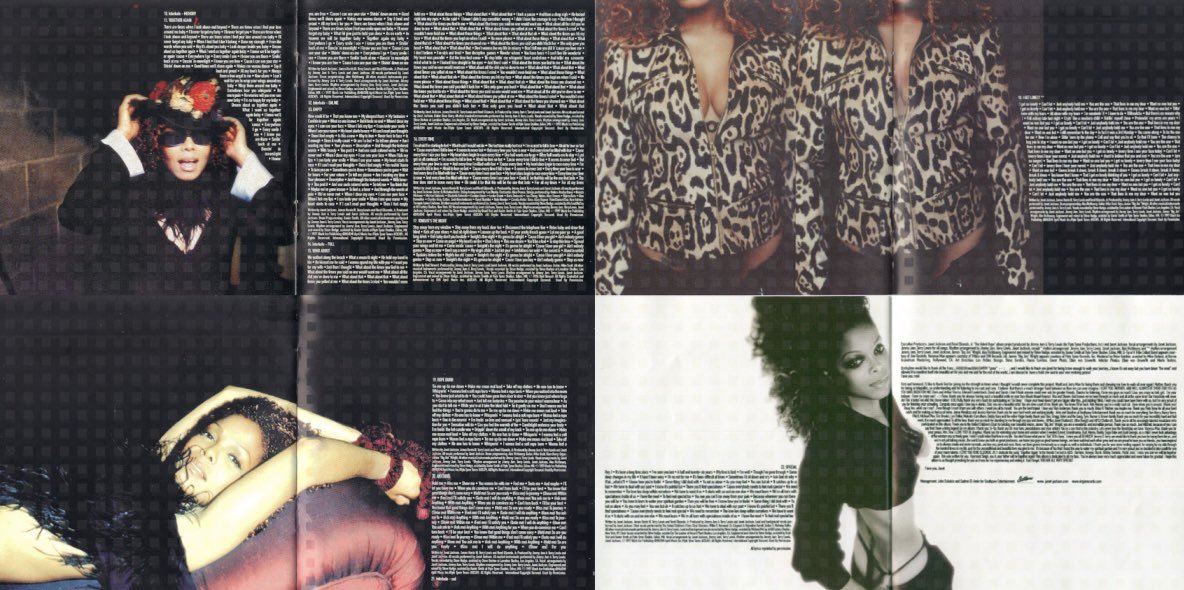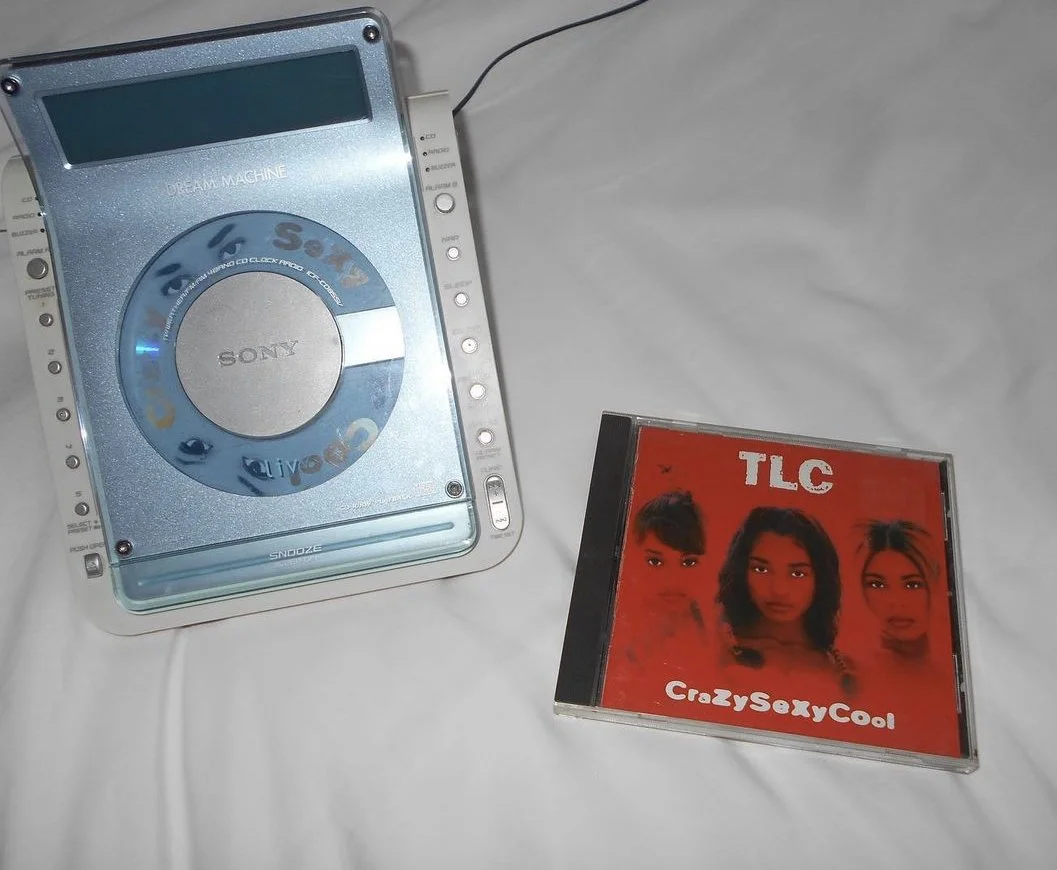CDs, Saving Money and The Music
Is the return of analog our future? Many media lovers and pop culture enthusiasts, including Serena Morris of She’s Underrated, believe so.
As recently as 15 years ago, CDs were still the most popular way of owning and playing music on your own accord, beating out the culture-shifting MP3 player for the time being. “Like a lot of us who grew up in the 90s and early 2000s, our CDs meant everything and felt like personal treasures,” says Morris. “I remember taking road trips with my mom and getting so excited to bring out my big CD binder and flip through it, trying to decide what would be the perfect driving soundtrack.”
Scans of Janet Jackson’s The Velvet Rope CD booklet courtesy of Becca
Physical copies of media — DVDs, VHS Tapes, Cassettes, Vinyls, etc. — preserve history in a finite way that the internet simply cannot. Whether you are looking for a version of a song that no longer exists on streaming (see: Beyonce’s “MOVE” with the forbidden oo la la la) or want to flip through the complimentary CD booklet for extra photos, behind the music information, and a special thank you from the artist, CD’s have the sentimentality that streaming lacks, vinyls cost more than CDs and aren’t nearly as portable, and cassettes do not possess instant rewind and replay capabilities.
“A lot of those CDs have been misplaced over time as we have all sort-of adapted to later forms of technology like iPods and now streaming — and I've found myself longing for that physical and visual element of listening that streaming just doesn't give you. Seeing the album cover, looking at the tracklist on the back, checking out what art is on the actual CD itself, seeing the CD shine, going through the booklet — all sacred acts of the process that make the experience a journey and honestly make the music sound better! Feels more intentional.”
What happens when you lose access to your smartphone and all of its consolidated capabilities? What happens to your favorite songs and projects when a streaming platform ceases to exist, there’s a disagreement over royalties, or a music executive becomes spiteful? Music lovers have already contended with these realities.
It wasn’t till 2021, two decades after the tragic passing of R&B legend Aaliyah at the age of 22, that fans were able to stream more than her first album Age Ain’t Nothing But A Number, and a few off-hand singles due to a yearslong disagreement between the ultra-popular artist’s estate and her former label, Blackground Records.
This past month, indie music haven Bandcamp was sold to a music marketing and licensing company, Songtradr, who promptly laid off half of Bandcamp’s staff. When the buyout was first announced, independent musicians were rightfully sent into a state of anxiety and ardent hard-drive backing, as major transitions of ownership have been known to gut the heart and usability of comparable community-driven platforms. In both of the aforementioned cases, owning a physical copy of the music became the clear answer to the dilemma for fans.
The scramble to preserve physical copies of music in an increasingly digital world can be spotted in modern pop culture. Owning a record player has come back in fashion as a notable interior design choice as collecting and displaying vinyls has become a rather popular hobby, across all genres, since the 2020 COVID-19 pandemic. A leading label in contemporary eccentric fashion, Coperni’s latest conversation-starting piece is the 3D-printed CD-Player Swipe Bag. Part of their Spring-summer 2024 collection, the bag became the apple of music and fashion lovers’ eyes as the bag is a sleek, silver, chic accessory with full CD playing capabilities and a headphone jack.
Via Serena Morris
Buying the CDs of your beloved artists is a cost-effective, monetary way to support them. And arguably one of the most powerful, as CD sales put more money in the artist’s pocket. “One stream on Spotify pays about three-tenths of a penny — that means 1,000 streams pays $3. To put it a bit differently, you would need 3,000 streams to make $9, about the same profit you will make when you sell one CD at a concert for $10.” says Tony van Veen the CEO of DIY Media Group.
Serena Morris’ earlier comment about CDs making music sound better, is actually a technological fact. CDs have better audio quality due its ability to store much higher frequencies than digital formats, “The fundamental audio format used by CDs establishes uncompressed CD-quality sound; almost 29 times higher than streaming services such as Spotify, Apple Music or Tidal,” reports CD Unity.
So whether you’re looking to be an audio snob, an avid collector, a supportive fan, or a nostalgia geek, going back to CDs may be the way for you. You’d be joining Morris as she intends to keep growing her CD collection and thoughtfully connecting to the music she appreciates, “It's been the best and most fun journey to tap back into and I kind of feel like I'm connecting to little me. I can't wait to continue to collect and listen to music in a way that feels most special and authentic to me.”






